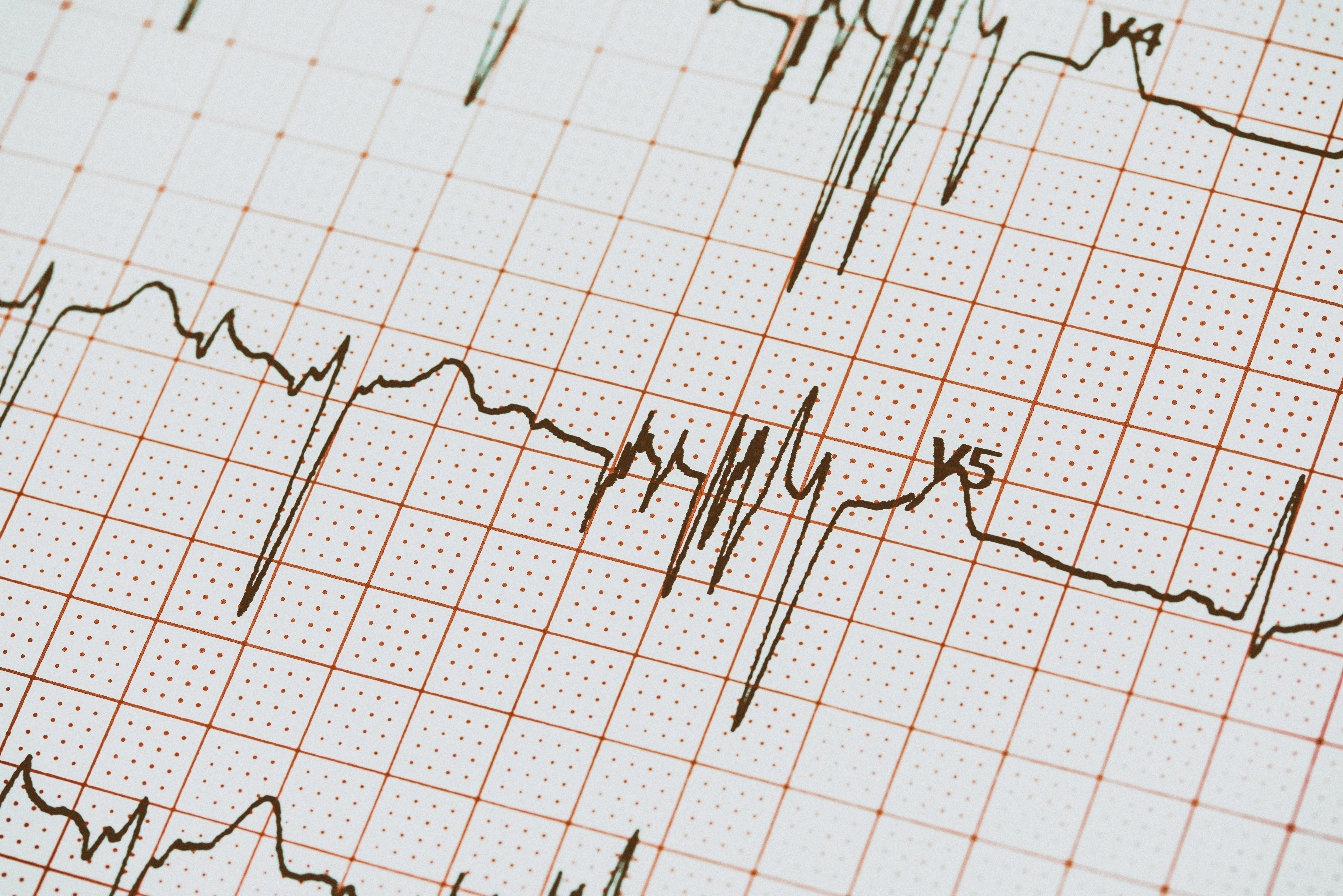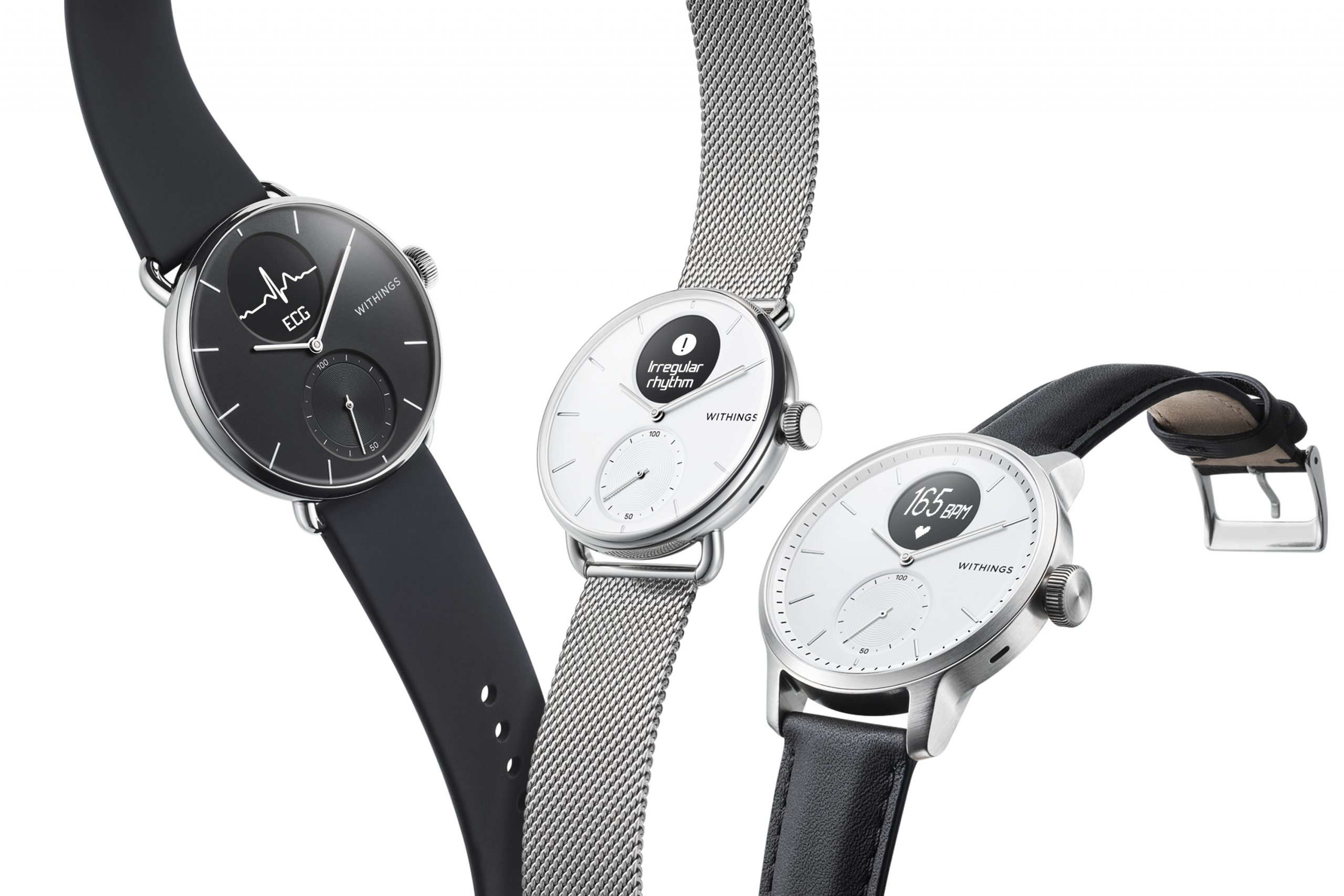
Discover the importance of heart health, as well as the role that an ECG heart monitor can play in determining whether you have any underlying heart conditions.
Update October 9, 2020: This post has been edited to reflect newly-available technology.
Did you know that someone suffers from a heart attack once every 40 seconds? According to the CDC, heart disease is the leading cause of death for women and men in the U.S. In fact, it’s so widespread that a quarter of all deaths can be chalked up to heart disease. When it comes to your health, your heart should be close to the top of the agenda. Read on to learn more about the role of an electrocardiogram (ECG)—a tool that measures your heart’s electrical activity—in protecting you from cardiovascular problems.
What is an ECG?
In a medical setting, you’ll only encounter an ECG heart monitor after you’ve already experienced symptoms that could indicate a heart problem. ECG—or EKG in some instances—is an acronym for an electrocardiogram. This device measures how well your heart chambers conduct electrical energy, as well as the speed of your heart beats. This data is then used to find out whether you are suffering from any underlying heart conditions. Oh, and if all this talk of electrical energy and heart health is making you feel a bit confused, don’t worry! Basically, your heart’s electrical system creates signals that trigger your heartbeats. That’s really all there is to it.
How does an ECG heart monitor work?
Well, it’s complicated. Essentially, your heartbeats send electrical impulses, also known as “waves,” causing your muscles to start pumping blood from the heart. An ECG machine simply uses electrodes to sense these electrical impulses. It’s a non-invasive procedure, and doesn’t cause any pain or discomfort.
When is an ECG most likely to be needed?
ECG heart monitors tend to be used when people begin to show signs of potential heart problems, such as chest pains, rapid pulse, shortness of breath, dizziness, or heart palpitations. Some of the conditions that an ECG may help doctors to spot include:
- Arrhythmias, or irregularities in the rhythm of your heart.
- Coronary heart disease, which is when the blood supply to your heart is interrupted by a buildup of fatty material.
- Heart attacks, caused by an abrupt blockage to your heart’s blood supply.
- Cardiomyopathy, a condition where the heart walls thicken or enlarge.
It’s also possible that an ECG will be used to monitor the treatment of a pre-existing heart condition—such as a pacemaker—while people who are over the age of 50 may get an ECG to screen for early signs of heart problems.
What is a medical ECG procedure like?
Need to get an ECG but worried about what the medical procedure might involve? Let’s find out a little more about what you need to know before going in for the test. First things first: there aren’t any food or drink restrictions, so don’t worry about changing your dietary habits before you get an ECG. Basically, change into a gown, and soft electrodes will be attached to your legs, chest, and arms. Then you’ll lie on a table while the electrocardiogram records your heart’s electrical activity, which should take around 10 minutes.
It’s important to remember that there are a couple of different types of electrocardiograms, each of which check for different heart conditions, so in some ECG tests, such as Holter Monitoring, you will need to wear a portable ECG heart monitor for 24 hours. In most cases, however, it’s just a quick in-and-out at the clinic or doctor’s office.
After you get an ECG, it’s time to check your results. Basically, your heart rhythm has 3 main parts: the P wave, the QRS complex, and the T wave. If your heartbeat is fairly normal—otherwise known as a sinus rhythm—the entire cycle should take around 1 second, and the P wave, QRS complex, and T wave will proceed in an ordinary, regular manner. If you are suffering from heart problems, abnormal patterns will show up on your ECG. For instance, the P wave may disappear entirely or the ST segment may dip, rather than remain flat. Unless you’re suffering from a problem that needs immediate attention, you should receive your results within 2 to 3 days of your ECG procedure.
ECG on your wrist
You may have heard of the Apple Watch with ECG capabilities via a separate ECG app.
At Withings, we offer two analog watches that offer the ability to perform an ECG anytime, anywhere. With a long battery life that requires no charging, and an on-demand ECG, Move ECG is an activity and sleep tracking watch that also makes it easy to never miss an episode of atrial fibrillation. For those who want more advanced monitoring, ScanWatch is the first hybrid smartwatch to track vital signs to detect possible cardiovascular health issues and help improve overall fitness. It is equipped with a PPG sensor and 3 electrodes to record a 30-second electrocardiogram directly from your wrist to detect atrial fibrillation. ScanWatch also allows you to measure your oxygen saturation rate (SpO2) with a medical-grade oximeter, analyze your sleep, monitor your activity (step tracking, multi-sport monitoring of more than 30 sports, water resistance up to 50m), receive notifications from more than 100 applications directly on the screen of your watch and enjoy a battery that lasts up to 30 days between charges.
So, what is an ECG? We hope you now you know a little bit more about the procedure! Want to find out more about heart health, and more specifically, how you can put yourself in a good position to remain free of heart troubles? Check out our 4 Simple Rules To Keep Your Heart Healthy.



